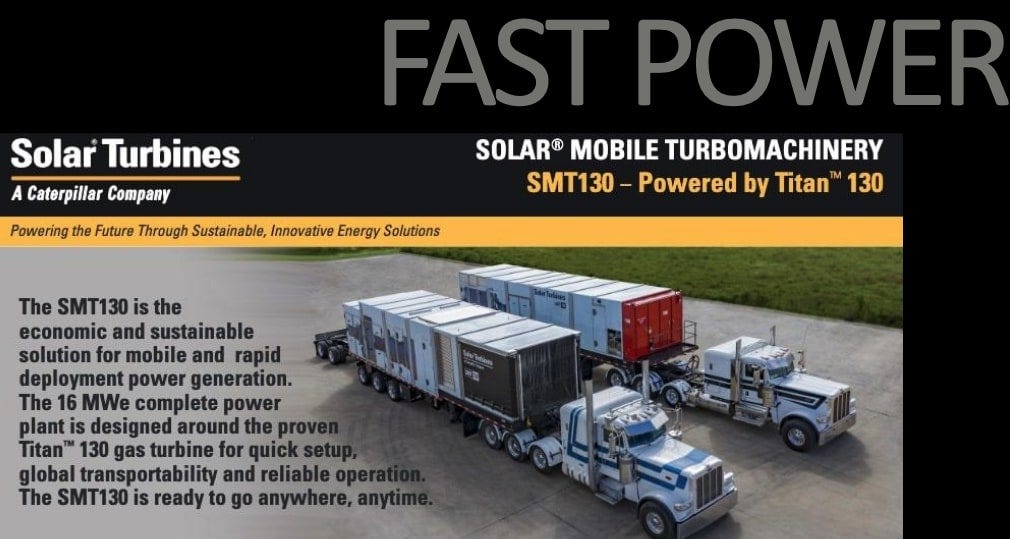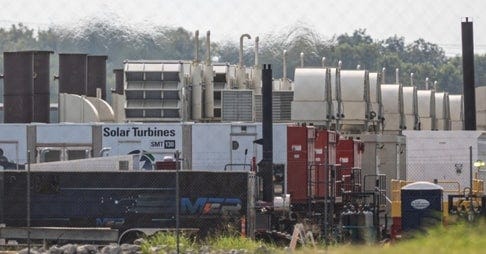- INFRA INSIDER
- Posts
- ⚡The AI Power Surge: xAI’s 400,000 GPUs & Why Reasoning AI Needs 100x More Compute
⚡The AI Power Surge: xAI’s 400,000 GPUs & Why Reasoning AI Needs 100x More Compute
A massive expansion, groundbreaking AI models, and data center innovations—what’s the real impact?

Quick Bytes
⚡ xAI’s Power Surge: Doubling to 400,000 GPUs & 490 MWe in just 90 days—new Nvidia B200s & 6-7 Zettaflops of compute!
🚀 NVIDIA’s AI Evolution: From generative to reasoning AI, requiring 100x more compute—game-changing for AI infrastructure.
🔗 Next-Gen AI Hardware: Meet NVL72 with 40x performance & a silicon photonic switch saving megawatts of power.
🖥️ DGX Spark on Desktops: AI-powered assistants for every developer & programmer—AI coding on your behalf by year’s end.
🏗️ Massive Data Center Expansion:
18 MW in Central US, ready 2026 🔜 Expandable to 78 MW
500 MW site with liquid cooling 💦, 25 MW shell by 2026
Two 1 GW mega-sites 🔥 One ready by 2025, another in 24 months
📅 Need data center capacity for AI workloads? Let’s talk. Book a meeting today.
xAI Doubling Power and Chips to 400,000 GPU and 490 MWe in 90 Days
xAI has a permit to install 240 MWe of gas turbines, specifically fifteen Solar-SMT-130 models, will let them double the GPUs to 400,000. The 200,000 new chips will be Nvidia B200s. This should be about 6-7 Zettaflops of compute. This will be about 11 times the 100K H100s compute used for pre-training Grok 3.
xAI, through its affiliate CTC Property LLC, filed an operating permit application with the Shelby County Department of Health in January 2025.

The permit for xAI to install turbines, specifically fifteen Solar-SMT-130 models, will let them double the GPUs to 400,000.
15 of the 16 MWe turbines is 240 MW. This would double the power there from 250 MW to 490 MW. This is enough for 400,000 GPUs.
This filing aligns with xAI’s ongoing efforts to expand its infrastructure, as the supercomputer’s capacity reportedly doubled to 200,000 GPUs by December 2024, with plans to scale further toward 1 million GPUs.


Takeaways from NVIDIA's GTC 2025 Keynote: A Fundamental Shift in AI Infrastructure
At NVIDIA's GTC 2025, Jensen Huang’s keynote revealed transformative developments that are reshaping AI infrastructure requirements. The most significant shift is the evolution from generative to reasoning AI – a change with profound computational implications.
Unlike generative AI's one-shot answers, reasoning models work step-by-step, approaching problems from multiple angles and self-verifying results. This fundamental difference means reasoning AI requires 10-100x more tokens than generative models. As Jensen put it, "The computation requirement is easily 100 times more than we thought we needed this time last year."
This computational explosion explains NVIDIA's aggressive scaling strategy, exemplified by their new NVL72 system with Dynamo software, which delivers 40x performance improvement over Hopper for reasoning workloads.
NVIDIA also revealed a groundbreaking silicon photonic network switch that eliminates power-hungry transceivers. For million-GPU installations, this technology could save "tens of megawatts" of power – enough to power additional compute systems. This represents a five-year investment and hundreds of patents, fundamentally changing how mega-scale AI factories will be built.
Looking forward, Jensen unveiled their multi-year roadmap including the Vera Rubin architecture (2026) and Rubin Ultra (2027). These platforms feature comprehensive redesigns with new GPUs, CPUs, networking, and memory technologies. The Rubin Ultra will push rack densities to 600 kilowatts per rack and require major innovations in data center cooling infrastructure.
For individual professionals, the DGX Spark "AI accelerator accessory" brings enterprise-grade AI computing to laptops and desktops. Jensen predicted, "By the end of the year, every computer programmer will have an agent programming on their behalf."
The message is clear: AI's computational demands are vastly exceeding previous expectations, and organizations planning infrastructure investments must understand this fundamental shift to remain competitive as we enter the era of reasoning AI.
New Capacity Opportunities For 2025 and Beyond
18 MW in The Central Region of the United States
200 kW/rack
Ready for service in early 2026
Expandable to 78 MW
500 MW in the central region of the United States
25 MW Powered shell available in 2026
Liquid cooling
Expandable to 500 MW
Two 1 GW sites in the United States
One site is ready at the end of 2025
The other site is ready in 24 months
Liquid cooling at both sites
The above sites are great for large-scale deployments and we have plenty of inventory for those that need a few megawatts or hundreds of kilowatts of capacity. What kind of infrastructure are you looking for? Book time here with our team to learn about what’s available.

Your Feedback Matters
At Infra Insider, we’re here to give you an edge—exclusive insights into the evolving infrastructure world that others miss. While most newsletters skim the surface, we go deeper, spotlighting the trends shaping AI, data centers, and tech capacity. Think behind-the-scenes intel, key players driving change, and actionable updates straight from the field. It’s not just another industry briefing—it’s your front-row seat to the future.
Your feedback is crucial in helping us refine our content and maintain the newsletter's value for you and your fellow readers. We welcome your suggestions on how we can improve our offering; [email protected].
Nina Tusova
Director of Customer Relationship & Success // Team Ignite
Did this newsletter bring the heat or just a little spark? Rate the intel! |







Reply